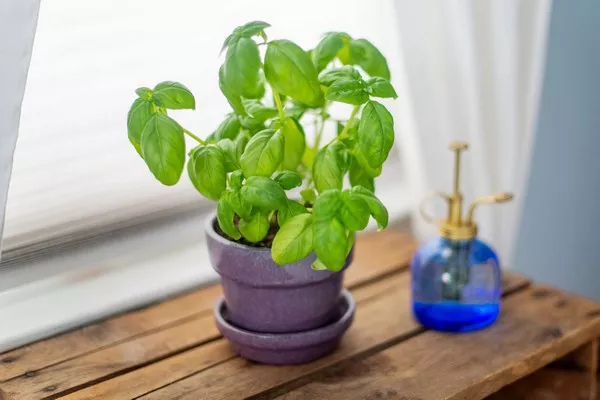Houseplants bring life and vibrancy into our homes, offering aesthetic appeal and purifying the air we breathe. However, along with their beauty comes the risk of pest infestations, which can wreak havoc on our beloved green companions. Understanding which houseplants are most prone to pests is crucial for maintaining a healthy indoor garden. In this comprehensive guide, we will delve into the various types of pests that commonly afflict houseplants and identify the specific plant species that are particularly susceptible to infestation.
Identifying Common Pests
Before delving into the types of houseplants most prone to pests, it is essential to familiarize ourselves with the common culprits that can wreak havoc on indoor greenery. Pests encompass a wide range of organisms, including insects, mites, and even fungal pathogens, all of which can pose a threat to the health and vitality of houseplants. Common pests include aphids, spider mites, mealybugs, scale insects, whiteflies, and fungus gnats, among others. Each of these pests has unique characteristics and feeding habits, but they share a common trait: the ability to rapidly multiply and cause significant damage if left unchecked.
Understanding the Factors Contributing to Pest Infestations
Pest infestations can occur for a variety of reasons, and understanding the factors that contribute to their proliferation is essential for effective pest management. One of the primary contributors to pest infestations is poor plant hygiene. Accumulation of dust, debris, and dead plant material provides an ideal breeding ground for pests and can attract them to your houseplants. Additionally, overwatering and improper drainage can create moist conditions that are conducive to pest infestations, particularly those caused by fungal pathogens and fungus gnats.
\See Also: How do pests affect plant growth?
Identifying Houseplants Most Prone to Pests
While all houseplants are susceptible to pest infestations to some extent, certain species are more prone to attacks than others. Understanding which plants are most susceptible can help you take proactive measures to prevent infestations and mitigate the risk of damage. Among the most vulnerable houseplants are those with delicate foliage and tender stems, as these characteristics make them attractive targets for sap-sucking pests such as aphids and spider mites. Plants with dense foliage or hairy leaves, such as African violets and ferns, are also more susceptible to infestations, as pests can easily hide and reproduce in the crevices and folds of their leaves.
African Violets
African violets (Saintpaulia spp.) are prized for their colorful blooms and lush foliage, but they are also highly susceptible to pest infestations. Their dense, hairy leaves provide an ideal hiding place for pests such as aphids, spider mites, and mealybugs, which can quickly colonize the plant if left unchecked. Additionally, African violets are sensitive to overwatering, which can create conditions favorable to fungal pathogens and fungus gnats. To prevent pest infestations on African violets, it is essential to maintain good airflow around the plants, avoid overwatering, and regularly inspect the foliage for signs of pests.
Ferns
Ferns are beloved for their graceful fronds and lush greenery, but they are also susceptible to pest infestations, particularly if grown indoors. Spider mites are a common pest of ferns, as they thrive in the warm, dry conditions typically found indoors. Additionally, ferns with dense foliage, such as Boston ferns (Nephrolepis exaltata), provide an ideal hiding place for pests, making them more susceptible to infestations. To prevent pest infestations on ferns, it is essential to monitor the plants closely for signs of pests, maintain high humidity levels, and avoid overcrowding the plants, which can impede airflow and promote pest infestations.
Orchids
Orchids are prized for their exotic beauty and stunning flowers, but they are also vulnerable to pest infestations, particularly if grown in warm, humid conditions. Mealybugs and scale insects are common pests of orchids, as they feed on the sap of the plant and can quickly multiply if left unchecked. Additionally, orchids are susceptible to fungal infections, particularly if grown in overly moist conditions. To prevent pest infestations on orchids, it is essential to maintain good airflow around the plants, avoid overwatering, and regularly inspect the foliage for signs of pests.
Succulents
Succulents are prized for their unique shapes and drought-tolerant nature, but they are not immune to pest infestations. Mealybugs and spider mites are common pests of succulents, particularly if grown indoors or in low-humidity environments. Additionally, overwatering can create conditions favorable to pest infestations, as it can cause the roots to rot and attract pests such as fungus gnats. To prevent pest infestations on succulents, it is essential to allow the soil to dry out completely between waterings, provide adequate airflow around the plants, and regularly inspect the foliage for signs of pests.
Conclusion
In conclusion, understanding which houseplants are most prone to pests is essential for maintaining a healthy indoor garden. While all houseplants are susceptible to infestations to some extent, certain species are more vulnerable than others. By identifying the specific plants that are most at risk and implementing proactive pest management strategies, such as maintaining good plant hygiene, monitoring for signs of pests, and providing optimal growing conditions, you can effectively prevent pest infestations and ensure the continued health and vitality of your indoor greenery.


